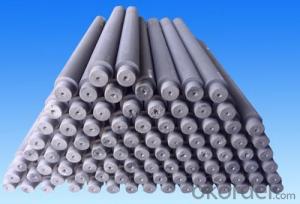When we talk about energy storage, the conversation is incomplete without mentioning graphite electrodes. These little marvels of modern technology are the unsung heroes of our energy infrastructure. They’re the silent partners in the dance of energy conversion and storage, and yet, they’re often overlooked. But today, we’re going to shine a spotlight on these graphite electrodes and explore their potential in energy storage.
First things first, let’s get to know graphite electrodes a bit better. They’re made from, you guessed it, graphite – a form of carbon that’s known for its ability to conduct electricity. Graphite is lightweight, has a high energy density, and is chemically stable, making it an ideal material for use in electrodes. But what really sets graphite electrodes apart is their role in the energy storage process.
In the world of batteries, graphite electrodes play a crucial role in the anode, the negative side of the battery. They provide a platform for lithium ions to attach and detach during the charge and discharge cycles. This process is what gives our devices the power they need to function. But the potential of graphite electrodes doesn’t stop there. They’re also used in other energy storage technologies, such as supercapacitors and fuel cells, where their high conductivity and stability come into play.
Now, let’s dive into the heart of the matter – the potential of graphite electrodes in energy storage. One of the most significant advantages of graphite electrodes is their ability to store a large amount of energy in a relatively small space. This is particularly important in our increasingly mobile world, where we want our devices to be compact and powerful. The high energy density of graphite electrodes makes them perfect for applications like smartphones, laptops, and electric vehicles.
Another advantage is their long cycle life. Graphite electrodes can withstand many charge and discharge cycles without significant degradation in performance. This is a game-changer for renewable energy systems, where energy storage is critical for maintaining a consistent power supply when the sun isn’t shining or the wind isn’t blowing. The durability of graphite electrodes helps to ensure that these systems can operate efficiently over long periods.
But what about the environmental impact? We’re all becoming more conscious of our carbon footprint, and the energy storage industry is no exception. Graphite electrodes have a lower environmental impact compared to some other materials used in energy storage. They’re made from a naturally occurring material, and their production process is relatively clean. Plus, they can be recycled, reducing waste and contributing to a circular economy.
However, there are challenges to overcome. One of the main issues with graphite electrodes is their limited rate capability. This means that they may not be the best choice for applications that require rapid charging or discharging. Researchers are working on ways to improve this, such as by optimizing the structure of the electrodes or by combining them with other materials to enhance performance.
The future of graphite electrodes looks promising. As technology advances, we can expect to see even greater improvements in their performance and efficiency. This could lead to more widespread use in various energy storage applications, from grid storage to portable devices. The potential for innovation in this area is vast, and it’s exciting to think about the possibilities.
In conclusion, graphite electrodes are a vital component in the energy storage landscape. Their high energy density, long cycle life, and environmental benefits make them an attractive option for a variety of applications. While there are challenges to address, the ongoing research and development in this field give us hope for a brighter, more efficient energy future. So, the next time you’re charging your phone or driving an electric vehicle, remember the humble graphite electrode – the unsung hero behind the scenes, powering your world.

